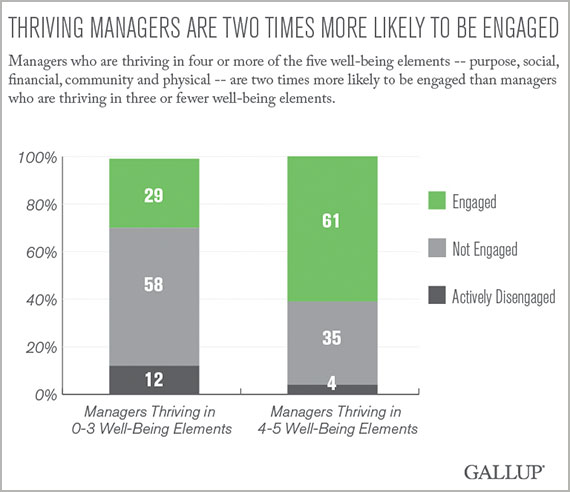Retaining quality managers is a top priority for every organization, and research has consistently found that engaged managers are significantly less likely to leave companies than their actively disengaged counterparts. As a result, new research from Gallup makes a strong case for making manager and employee well-being a top priority within leading organizations. According to the research, managers with high well-being are more than twice as likely to be engaged at work. Specifically, 61% of managers with high well-being are actively engaged compared to 29% of managers with low well-being.

What’s more concerning is the negative impact disengaged managers have on teams. Employees who are supervised by a highly engaged manager are 59% more likely to be engaged than those supervised by an actively disengaged manager. An engaged manager supervising engaged employees leads to increased productivity, better-quality work, and lower turnover. Also, Gallup estimates that managers account for at least 70% of the variance in employee engagement scores across business units. The statistics reveal an urgent need for companies to address the challenge of fostering higher engagement at the managerial level in order to retain their top-performing employees.
In order to increase well-being companywide, well-being programs need to be made available to managers and employees. Further, leaders who exemplify high well-being themselves create a culture of well-being. Organizations can begin by inserting activities around well-being in managers’ development plans, including publicly sharing well-being goals and tracking progress towards those goals. The concept is rooted in the idea that creating a culture of role modeling is valuable because of how managers influence employees.













